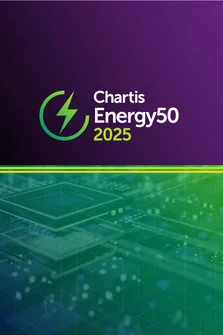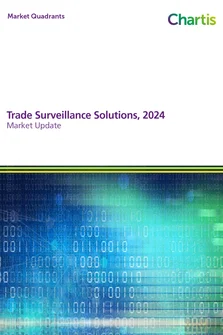This report provides an independent evaluation and description of Allegro’s leading practices and competitive position. Our analysis is based on information in the Chartis report Energy Trading Risk Management Systems 2017, and our RiskTech Quadrant® for energy trading risk management.
The report also includes brief coverage of:
- The main demand-side trends in this market, with an analysis of the key business and regulatorychallenges.
- The supply-side dynamics, with a focus on the vendor landscape.
As banks withdraw from energy trading markets, the focus of many trading firms is shifting toward physical assets, changing the functionality they now require from their solutions. And vendors are responding. Energy Trading Risk Management (ETRM) solutions’ enhanced capabilities now give them much of the functionality normally found in Enterprise Resource Planning (ERP) systems. Consequently, many firms are starting to give their ETRM solutions a more central role, in areas such as determining strategies, optimizing assets, fulfilling their accounting requirements, and providing universal data stores.
ETRM solutions that cover a range of physical commodities require access to multiple data sources covering aspects such as pricing, processing costs and efficiency, warehouse space, shipping fees, and losses during transit. The growing demand for data has made big successes of many specialist suppliers, including large data firms that aggregate data from other sources, and smaller firms that gather data directly, often using advanced technology.
Again largely because of FIs’ shift in focus toward physical assets, credit risk is featuring more in ETRM solutions, increasing their appeal. The volatility of physical energy commodities means that default rates are often high or uncertain, boosting the value of credit risk analytics. As a result, many vendors are now building integrated credit risk solutions into their ETRM offerings.
The regulators, meanwhile, are emphasizing improvements in trade surveillance and transparency via regular reporting, as stipulated by legislation such as the Market Abuse Regulation (MAR), the Regulation on Wholesale Energy Market Integrity and Transparency (REMIT), and the Dodd-Frank Act. This growing demand for transparency is not new to financial services. But so far it has not been enforced in energy trading firms, so only a few have trade surveillance processes already in place. In a departure from many other risk management areas, the balance between cloud and open-source solutions in energy trading firms currently favors the cloud. However, the customization power that open source offers is likely to boost the popularity of these systems in future.
Finally, vendors are broadly reflecting these market changes in their offerings, although the diversity of the sector means that no single vendor covers all possible requirements. But increasing consolidation may enable some vendors to offer broader coverage.
Only users who have a paid subscription or are part of a corporate subscription are able to print or copy content.
To access these options, along with all other subscription benefits, please contact info@risk.net or view our subscription options here: http://subscriptions.risk.net/subscribe
You are currently unable to print this content. Please contact info@chartis-research.com to find out more.
You are currently unable to copy this content. Please contact info@chartis-research.com to find out more.
Copyright Infopro Digital Limited. All rights reserved.
As outlined in our terms and conditions, https://www.infopro-digital.com/terms-and-conditions/subscriptions/ (point 2.4), printing is limited to a single copy.
If you would like to purchase additional rights please email info@chartis-research.com
Copyright Infopro Digital Limited. All rights reserved.
You may share this content using our article tools. As outlined in our terms and conditions, https://www.infopro-digital.com/terms-and-conditions/subscriptions/ (clause 2.4), an Authorised User may only make one copy of the materials for their own personal use. You must also comply with the restrictions in clause 2.5.
If you would like to purchase additional rights please email info@chartis-research.com


